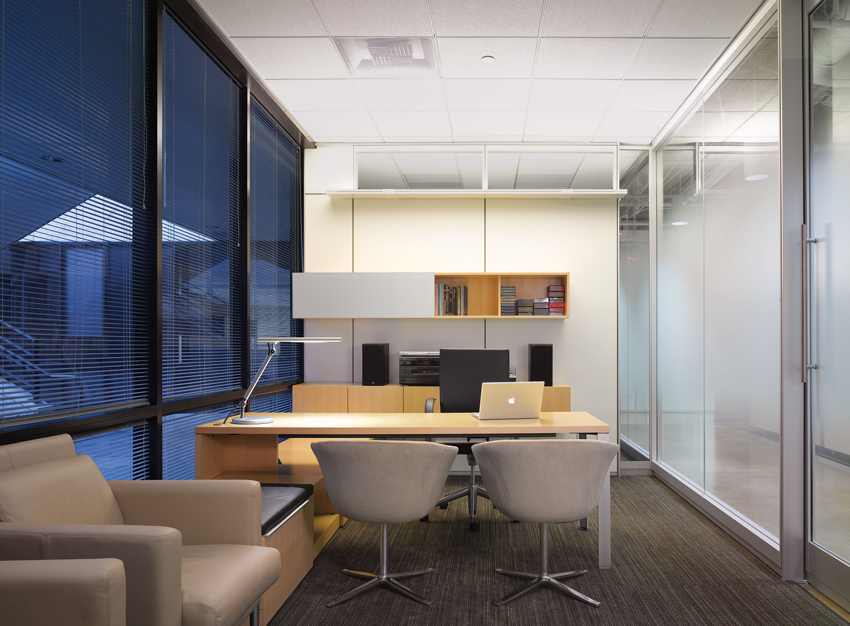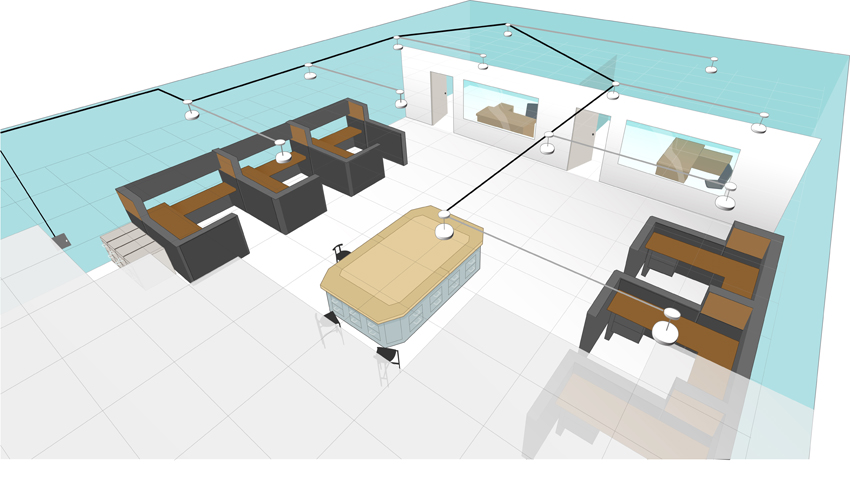A New Approach to Acoustics
Learning Objectives:
- Outline the role background sound plays in achieving effective acoustics.
- Explain how sound masking reduces sound insulation requirements (e.g., STC).
- Use Speech Privacy Potential (SPP) to achieve project savings.
- Learn recent changes to ASTM standards related to sound masking.
Credits:
This course is approved as a Structured Course
This course can be self-reported to the AANB, as per their CE Guidelines
Approved for structured learning
Approved for Core Learning
This course can be self-reported to the NLAA
Course may qualify for Learning Hours with NWTAA
Course eligible for OAA Learning Hours
This course is approved as a core course
This course can be self-reported for Learning Units to the Architectural Institute of British Columbia
With mounting recognition of the need to support focus at work as well as to promote wellness, many organizations are looking to improve speech privacy, noise control, and acoustic comfort for building occupants.
Background sound is key to achieving these goals. Indeed, all acoustic design considers this factor—for example, when determining Sound Transmission Class (STC), Articulation Index (AI) or signal-to-noise ratio (SNR). However, building professionals often neglect to use the only reliable and precise means of controlling the background level—a sound masking system—as a design tool. Instead, it is relegated to the last step in the design process, used to either cover up noises remaining after implementing absorption and blocking strategies or as a post-construction Band-Aid when occupants report dissatisfaction with their acoustic environment.

Credit: iStockphoto/PeopleImages
By using sound masking to define and, therefore, know exactly what the background sound level and spectrum will be anywhere in a facility, one can more accurately specify the remaining materials.
By turning the traditional three-tiered approach of absorb, block, and cover—collectively known as the ‘ABC Rule’—on its head and using sound masking as the starting point for interior planning, building professionals can set an assured level of background sound throughout a facility and, hence, more accurately specify the blocking and absorptive elements, allowing it to be delivered in a more cost-effective manner—and with greater assurance of achieving the intended results.
Constructing Barriers
When attempting to create speech privacy for closed offices, organizations may specify walls with high STC ratings. However, these ratings are lab-tested and frequently overstate real-world performance by five to 10 points. Field testing of spaces, which accounts for direct and indirect (i.e., flanking) paths can be completed using apparent Sound Transmission Class (ASTC) and Noise Isolation Class (NIC) methodologies; however, such assessments are, of course, only performed after the fact.
Another common tactic is to construct full height partitions that extend all the way from the concrete floor to the deck. While this approach increases isolation, it also raises costs and can impede future reconfiguration of the space. Vigilance must still be maintained during design, construction, maintenance, and renovation to ensure that penetrations in the walls’ structure are controlled, because even minor ones can substantially reduce acoustic performance. This level of care can be difficult to sustain over the life of the space.
In any case, modern design and construction standards do not always allow for a high level of physical containment. To preserve flexibility, walls are often built to the suspended ceiling or using demountable partitions. Walls may include substantial windows or even be built-in glass from floor to ceiling. Budget can also limit options.
These challenges raise the question as to whether there is a preferable and more reliable method of achieving speech privacy for closed rooms—an integrated approach that begins with a precisely controlled level of continuous background sound.
The Role of Background Sound
Many people use the words ‘noise’ and ‘sound’ interchangeably. However, not all sound is noise. One can define ‘noise’ as any unwanted sound. Similarly, ‘silent’ and ‘quiet’ have different meanings. A silent space is one with no sound at all, whereas a quiet one is free of unwanted sound.
Understanding these seemingly subtle differences is critical to comprehending the role that sound itself plays in creating an effective acoustic environment. All too often, noise control strategies are mistakenly pursued with the intention of making a facility as silent as possible. However, the more silent one tries to make a space, the noisier it can seem to occupants. This phenomenon can be attributed to the fact that an effective acoustic environment relies in part on the provision of an appropriate level of continuous background sound.

Credit: Benny Chan/Fotoworks
To preserve flexibility, walls are often built to the suspended ceiling or using demountable partitions. Walls may include substantial windows or even be built-in glass from floor to ceiling.
Due to improvements in construction materials, as well as quieter office and mechanical equipment, the ambient level in the majority of facilities is already too low, leaving employees working in library-like environments. The pin-drop conditions allow them to easily hear conversations occurring from a distance and even from within closed rooms. Though occupants typically describe such a workplace as ‘noisy,’ the root of the problem is that they are, in fact, too ‘silent.’ Put another way, the absence of background sound makes noises easier to hear.

Credit: iStockphoto/BrianAJackson
Most people are familiar with the masking effect of background sound. Everyday examples include the drone of an airplane engine, the murmur of a crowd in a busy restaurant, the hum of highway traffic, and the rustling of leaves in the wind.
The Variability of HVAC
Both ASTM E1130-16, Standard Test Method for Objective Measurement of Speech Privacy in Open Plan Spaces Using Articulation Index and ASTM E2638-10, Standard Test Method for Objective Measurement of the Speech Privacy Provided by a Closed Room consider background sound when calculating speech privacy.
However, ASTM E2638-10 also reminds readers that the Speech Privacy Class (SPC) is only valid at the time it is measured because the background level is presumed to be provided by heating, ventilation, and air conditioning (HVAC). The principal objective of this equipment is to optimize thermal regulation and maintain standard requirements for air quality. Even if well-designed, its output is only governed in that it is not to exceed maximums defined by the American Society of Heating, Refrigerating, and Air-Conditioning Engineers (ASHRAE) in Chapter 49: Noise and Vibration Control of the 2019 ASHRAE Handbook—HVAC Applications.1 It cannot control the minimum background sound level.
If maximum noise limits are used as a basis of design, then expectations for speech privacy will not be met whenever and wherever the background sound level is below that noise limit. Indeed, HVAC output often varies temporally and spatially by 15 decibels (dB) or more, according to zone, time of day, and season, as well the type of equipment used. Whenever and wherever the background level falls below the 30 dBA on which STC ratings—and, hence, wall choices—are based, occupants can no longer rely on the partition assembly for speech privacy. Furthermore, HVAC does not generate a spectrum conducive to speech privacy or comfort. Instead, it is largely arbitrary and varies considerably from space to space, as well as over time.
Consequently, speech privacy levels fluctuate from wall assembly to wall assembly, depending on their performance in the frequencies used to calculate STC, as well as the inconsistent noise level and spectrum generated by HVAC—not to mention sound leakages through various flanking paths. If privacy is achieved, it is likely due to good luck or overbuilding. If not, a sound masking vendor is contacted. In this scenario, the technology is consigned to Band-Aid status, whereas it could have been more effectively used as the starting point for interior planning.

Credit: iStockphoto/Alexjay
HVAC levels vary by zone and at certain times of day or year. Furthermore, this equipment does not generate a sound spectrum designed for speech privacy.

Credit: KR Moeller Associates Ltd.
A sound masking system consists of a series of electronic components and loudspeakers that distribute a sound specifically engineered to balance acoustic control with occupant comfort.
















